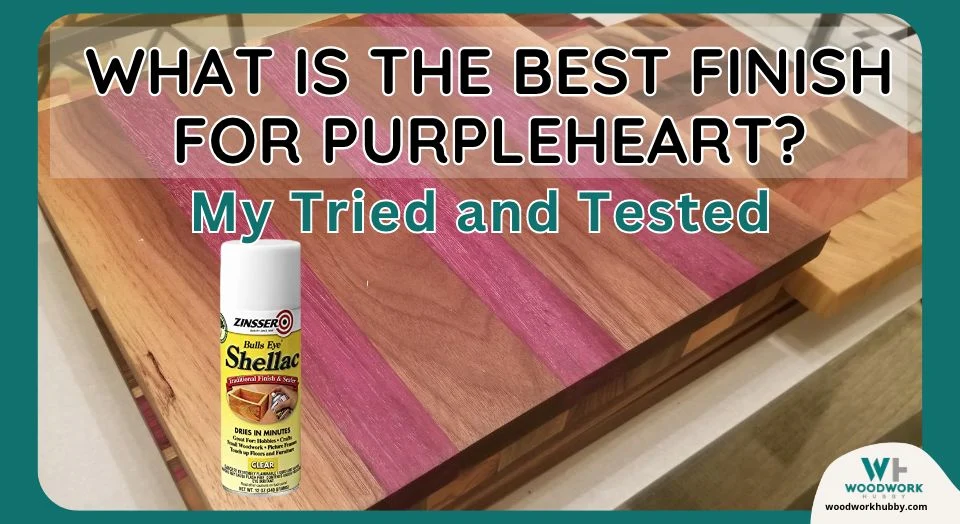If you have never worked with purpleheart wood, you might be amazed at how many hues it changes before it settles. I recently made a purpleheart side table and was confused as to what the best finish would be. After many hours of research, the below information is what I found to work for the best finish for Purpleheart.
The best finish for fresh purpleheart is Shellac, while the best one for faded purpleheart that cannot be sanded or stripped is polyacrylic. Both finishes are film-forming, and almost any film-building finish can protect Purpleheart from short-term oxidation.
In this article, you will learn more about finishing Purpleheart, including how its color changes with and without certain finishes. Among other things, you will also discover how to make purpleheart wood more purple alongside what you need to do to keep the lumber from losing its vibrance. But first, let’s look at why purpleheart changes color.
To find out How Long Does Shellac Take To Dry please click on the link provided.
Purpleheart and Finishes: A Brief Investigation
Purpleheart wood is very expensive because of its desirable but often fleeting purple hue. The purple “heart” of the tree is often greyish when it is freshly cut. Then it gets purple towards the middle. Later, oxidation gets to it, and it starts fading to a darker tint.
So what does that mean for the finish? It simply means that the purpleheart wood has to be finished in a way that its purple interior/heartwood becomes more prominent. However, the finish should not just offset the dimming from the time of the cutting to the time of finishing. It should also prevent further oxidation.
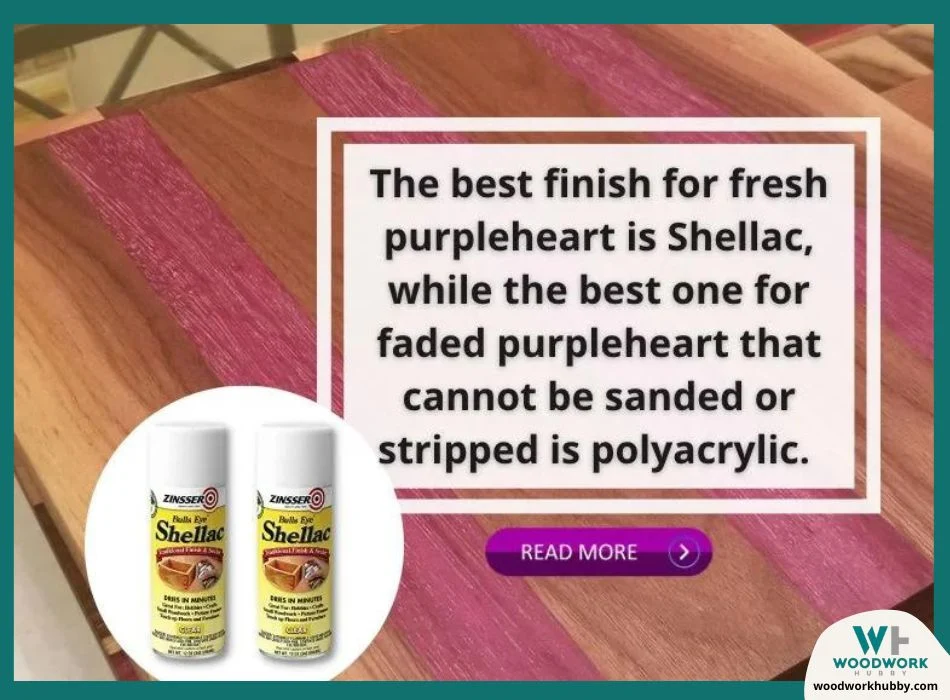
Oxidation is the process that occurs when a volatile substance comes in contact with oxygen. Since oxygen is abundant in the air, oxidation occurs when certain substances are out in the open. All natural wood oxidizes, but Purpleheart is one of the more vulnerable ones.
Since all wood oxidizes, it is reasonable to assume that most wood finishes might prevent oxidation. However, not all finishes are built alike. Here are some issues that can occur when the wrong finish is used on an expensive wood like purpleheart:
- The finish fails to protect – When a finish is meant for cheaper lumber, it is not as good at preventing oxidation. Such finishes get worn out pretty quickly, leaving an open pathway for oxygen to affect wood. Most finishes are actually meant to stop water from getting wood, and as long as they keep water out, they are good enough. But in the case of purpleheart or walnut, the goal of the finish is to preserve the color of the wood. But poor finishes can fail to do it.
- The finish seeps into the wood – Some finishes are meant to make softwood durable. They have strengthening features as they go deep into the lumber and cause tightening that makes the overall board more resilient. But that’s not what you want when you finish purpleheart wood. This timber is hard enough as it is. Any finish that attempts to seep into Purpleheart is wasted on this wood.
- The finish alters the color of the wood – Finally, the worst thing a finish can do to purpleheart is to change its color. Color-changing finishes are used with the intention of changing a specific board, plank, or sheet’s color. Or they are used to strengthen a project where said project’s appearance doesn’t matter. All woodworkers know that the best type of wood is one that maintains its color.
The UV Factor
Purpleheart’s color change isn’t just affected by oxygen. It is also affected by UV rays. This creates a dilemma. If you coat the purpleheart wood in a clear finish, the sunlight is going to decolor it. And if you coat it in an opaque film, the color that will be preserved will not be seen by anyone.
Every woodworker has his own solution. In my estimation, the combination of clarity, care, and acceptance produces the best result. Here’s what that entails.
- Clarity – Finish your heartwood with a clear coat that doesn’t change color.
- Care – Exercise caution and care to keep purpleheart wood from UV rays
- Acceptance – Understand that there is no way your purpleheart project or lumber will retain the exact same appearance across its lifetime.
With that said, we can move towards the rest of this post in the exact order starting with clarity, which is related to the finish of the wood.
How Do You Finish Purpleheart Wood?
You finish purpleheart wood using a film-building finish that does not change color. Ideally, the finish would bring up the brightness of the purple hue in the wood. It should protect the wood from oxygen and moisture contact.
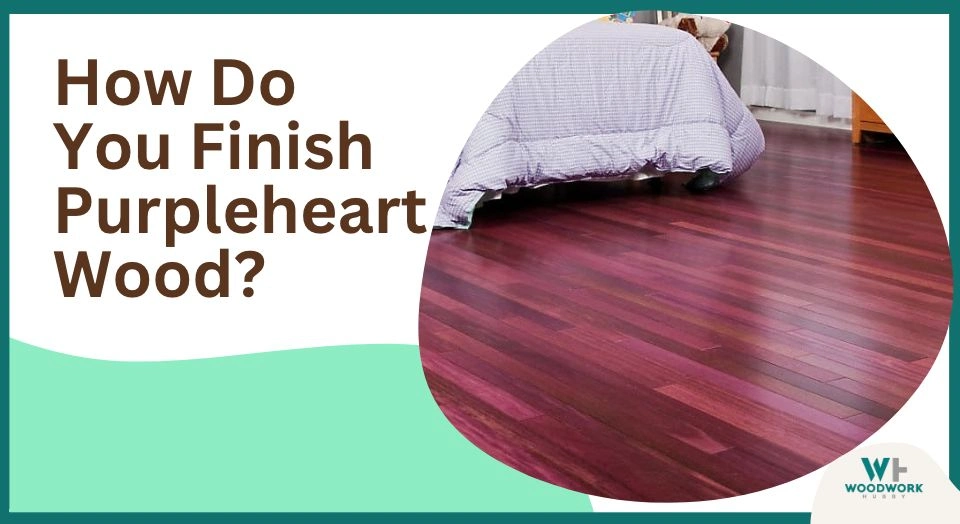
If the lumber has been left untreated and out in the open, it should be sanded and stripped before it is finished so that it is at its brightest when it is preserved with a finish. You have two options when selecting the finish.
The first is to opt for a finish that will preserve the appearance of purpleheart wood, and the second is a finish that can make the purpleheart wood more purple.
See my full article – is purpleheart food safe.
How Do You Make Purpleheart Wood More Purple?
You can make purpleheart wood more purple by either stripping its outer, oxidized layer or by using a varnish that makes its purple color more prominent. Both solutions have their advantages which is why you should implement them both if you can.
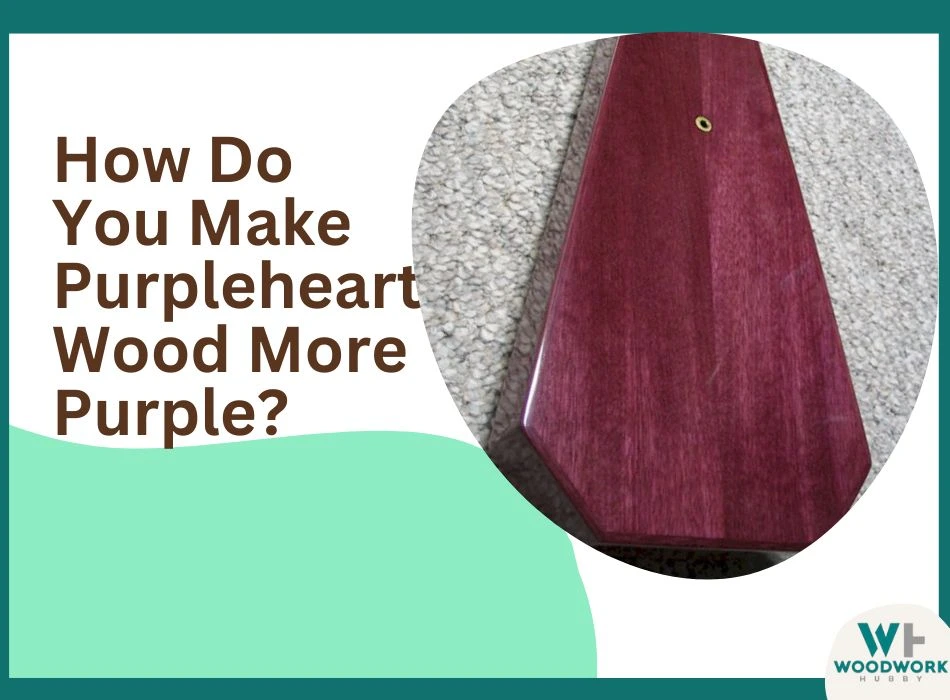
There will be instances where you cannot strip the wood. For instance, if it is already a part of a project. In that case, you’d resort to using Shellac to bring out whatever’s left of the purpleness.
Then there will be situations where you have to use a water-based finish. And that means Shellac is going to be out of the picture. You could sand down the lumber to make its purple color more prominent, then use a water-based poly coat to stabilize it.
Knowing what to expect when it comes to purpleheart stability is important because you might blame the finish for darkening. Purpleheart wood is meant to darken. This might make you wonder if the wood becomes less purple as it darkens.
Does Purpleheart Wood Stay Purple?
Purpleheart wood might stay purple longer if it is properly finished and cared for. But over time, it does darken, and you don’t see as much purple color in it as you do in the middle of its oxidation stage. Its final color has hints of purple but is much darker and closer to black.
The oxidation of purpleheart wood takes a week to get to a stable final result. It starts with grey color and continues to get bright and vibrant until it is bright purple. This happens within minutes. Sometimes it might take an hour.
After that, the oxidation continues for a few hours until the wood settles to a nearly-black color. Whenever you finish the purpleheart wood, you must observe where it is in the oxidation cycle because that’s the color in which it will stay for at least a year.
How Do You Get the Best Color for a Purple Heart?
To get the best color of purpleheart wood, you should sand it and use acetone to strip its outer layer. Then you should leave it in the sun until the wood is visibly purple and in a state you want to preserve. At that point, you simply need to apply an anti-UV film-forming finish, and the purpleheart wood will retain its tint for a year. Repeated finishing and polishing will help maintain its appearance.
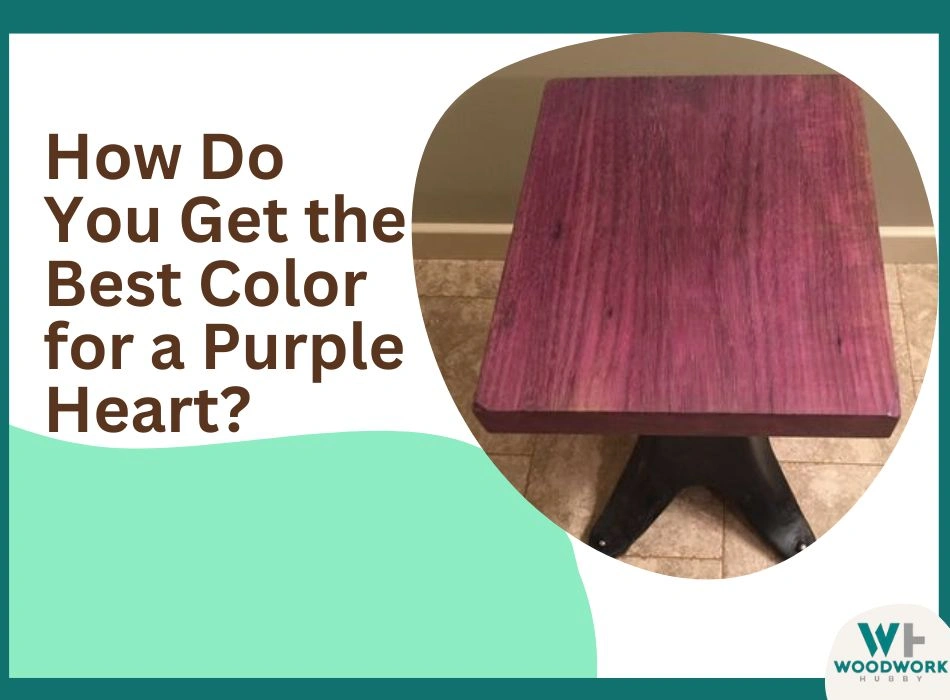
Final Thoughts – Best Finish For Purpleheart
Water-based polyacrylic finish and Shellac are the best options to finish purpleheart wood because they form a film over its surface and prevent contact with oxygen. Still, light and UV rays continue to do their work, and the wood loses its purple tint, albeit slightly.

